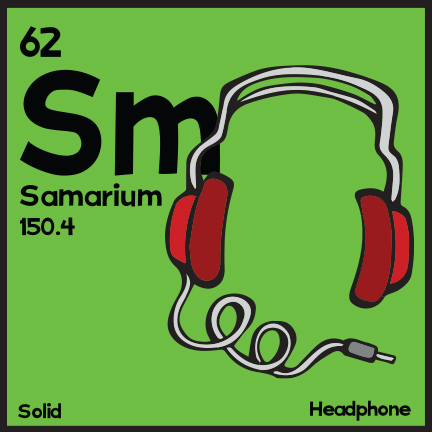
- Samarium is a chemical element with chemical Sm and atomic number 62 with an atomic weight of 150.4.
- Samarium is a silvery-white metal belonging to the lanthanide group of the periodic table.
- Samarium is a rare earth element.
- Samarium is relatively stable at room temperature in dry air, but it ignites when heated above 150 °C and forms an oxide coating in moist air.
- Samarium has a relatively stable oxidation state.
- Samarium is used as a catalyst in certain organic reactions: for example in organic research, chemists use to make synthetic versions of natural products.
- The oxide, Samaria, is used for making special infrared adsorbing glass and cores of carbon arc-lamp electrodes and as a catalyst for the dehydration and dehydrogenation of ethanol.
- Its compound with cobalt (SmCo5) is used in making a new permanent magnet material.
- Samarium is the fifth most abundant of the rare elements and is almost four times as common as tin.
- Samarium is a rare earth metal having a hardness and density similar to those of zinc.
- One of the most important applications of samarium is in samarium–cobalt magnets, which have a nominal composition of SmCo5 or Sm2Co17.
- Samarium have high permanent magnetization, which is about 10,000 times that of iron and is second only to that of neodymium magnets.
- These magnets are found in small motors, headphones, and high-end magnetic pickups for guitars and related musical instruments.
- Samarium catalysts assist decomposition of plastics, dechlorination of pollutants such as polychlorinated biphenyls (PCBs), as well as the dehydration and dehydrogenation of ethanol.
- Radioactive samarium-153 is a beta emitter with a half-life of 46.3 hours. It is used to kill cancer cells in the treatment of lung cancer, prostate cancer, breast cancer, and osteosarcoma.
- Samarium is used as a neutron absorber in nuclear reactors and in infrared absorbing glass.
Posted by Direniş ÇAYLI on December 22, 2016https://nanografi.com/blog/samariumthe-essentials-/https://nanografi.com/blog/samariumthe-essentials-/
Comments
Post a Comment